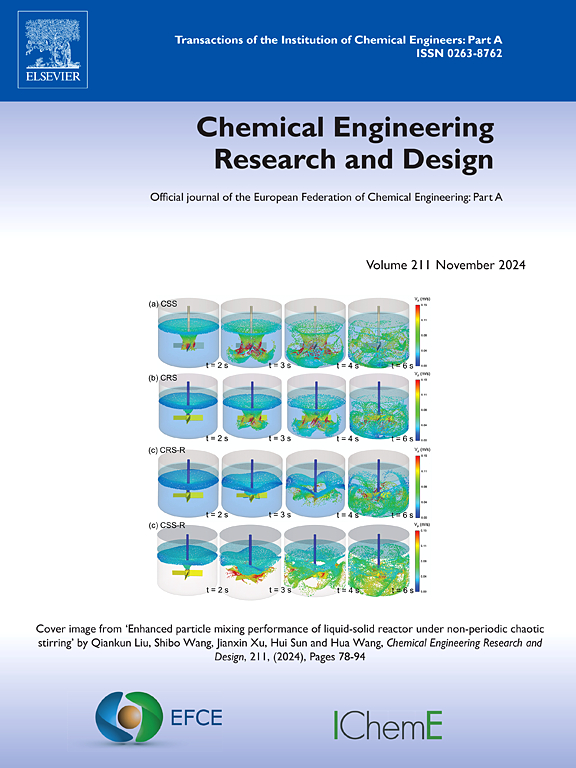Intensified alternative for sustainable gamma-valerolactone production from levulinic acid
IF 3.7
3区 工程技术
Q2 ENGINEERING, CHEMICAL
引用次数: 0
Abstract
γ-Valerolactone (GVL) is a promising bio-based chemical with applications in renewable fuels and chemicals. While several catalytic strategies for its production exist, a common challenge is the lack of an integrated process that combines both production and purification. Currently, these steps are performed separately, with distillation being energy-intensive, especially at low yields. This study presents a novel approach by integrating both production and purification of GVL in a single, energy-efficient operation using reactive distillation.The novelty of this work lies in the design and optimization of a reactive distillation column, where key operating conditions and design parameters are carefully selected to ensure that both chemical reactions and component purification occur efficiently within the same unit. Experimental data from the literature were used to model the process kinetics, ensuring the simulation accurately reflects experimental conditions. This integrated approach not only reduces energy consumption but also improves the overall efficiency of GVL production, offering a more sustainable and cost-effective alternative for industrial applications. By employing a multiobjective optimization framework, the design balances economic, environmental, and operational objectives, achieving a reduction in total annual cost (TAC) to 43 % and environmental impact (Eco Indicator 99, EI99) to 45 % of the values associated with conventional processes. Moreover, energy consumption is decreased by 63 %, and GVL production is increased by 25 %, demonstrating the significant potential of reactive distillation for improving both efficiency and sustainability.
求助全文
约1分钟内获得全文
求助全文
来源期刊

Chemical Engineering Research & Design
工程技术-工程:化工
CiteScore
6.10
自引率
7.70%
发文量
623
审稿时长
42 days
期刊介绍:
ChERD aims to be the principal international journal for publication of high quality, original papers in chemical engineering.
Papers showing how research results can be used in chemical engineering design, and accounts of experimental or theoretical research work bringing new perspectives to established principles, highlighting unsolved problems or indicating directions for future research, are particularly welcome. Contributions that deal with new developments in plant or processes and that can be given quantitative expression are encouraged. The journal is especially interested in papers that extend the boundaries of traditional chemical engineering.
 求助内容:
求助内容: 应助结果提醒方式:
应助结果提醒方式:


